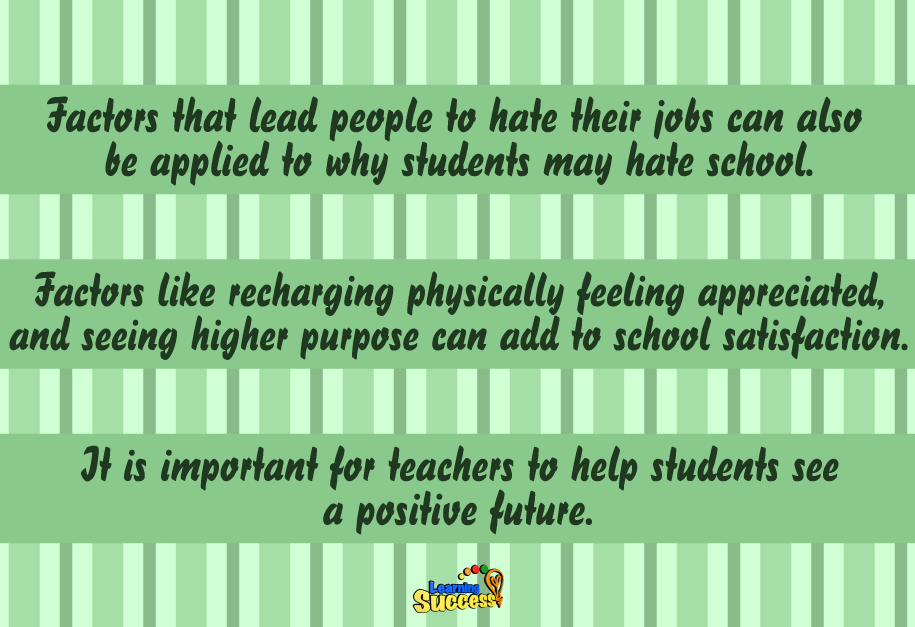
Employers have invested tons of effort into improving job satisfaction. But studies have shown that many strategies to improve the workplace could also apply to students in school.
Work habits are similar to school habits
In the article Why You Hate Work, Tony Schwartz and Christine Porath identified four areas that matter most to job satisfaction and productivity:
- Feeling good and recharged physically.
- Feeling like an appreciated and valued contributor.
- Having a clear focus and a say in prioritizing.
- Seeing a higher purpose in the work.
For many in the workforce, these points probably sound obvious. But recent studies have shown that these methods and values also work for students in school! In fact, several components can help employees feel better; the same things can be applied to students.

Teachers using employer strategies
The article Helping Students Find Purpose and Appreciation for School points out that researchers have found that the happiest students and workers have similar key traits:
- They generally feel good physically.
- They approach tasks with a sense of higher purpose.
As such, many schools have tried to implement similar strategies that workplaces do to employees. This includes:
- Using strategic breaks
- Emphasis on appreciation and purpose.
- Offering selective praise.
- Holding students more accountable for the quality of their school work.
Students learn that there are no limits to what they may achieve, regardless of their background or upbringing. In this atmosphere, kids believe more in their skills, and they learn more.
Regular breaks linked to increased knowledge retention
Teachers should consider these work force tactics:
Recharge: Insert short breaks for physical activity—stretching, dancing, jumping, or walking around. Provide regular times for reflection, which also has recharging value.
Appreciation: Compliment students on the small things they do. Don’t overly praise, just noticing and commenting appreciatively is quite powerful. Lower your threshold for showing your gratitude. Catch them being good when they are sitting still, following instructions, walking appropriately in the hallways, helping other students, speaking in a respectful tone of voice, and being creative.
Ownership: Think about what you value most in the lessons you are covering, be sure to emphasize that, and communicate that to your students. Where possible, give your students choices about what to do first, perhaps different ways to complete an assignment, whom to work with, or how to end the school day. Even if you do this once per week, it will be a great contrast and make a difference to your students.
Key Takeaways:
Not all students feel bored or stressed by school, just as not all workers hate their jobs. Students should be given the chance for physical breaks to help their bodies recharge and they should feel appreciated by the adults in their life.
Finally, they should be able to see a higher purpose for their study, a clear goal, or reason for working through the hard stuff. That way, they can become inspired and engaged students!
Do You Need help with a Learning Difficulty?
Our simple online analysis will help you get to the core of the problem and find the right solution for you.
Understanding how to help someone with a learning difficulty starts with understanding which micro-skills are affected. When you learn which of the micro-skills is the problem, you will then be on your way to solving it.
You'll also learn how to:
- Build confidence
- Enhance Learning ability
- Eliminate avoidance
- Build grit
You can get this analysis for free by filling out this simple form. This will help you get to the bottom of a learning difficulty and provide you with a solution. If you are ready to put this problem behind you click the button below and fill out the form.










